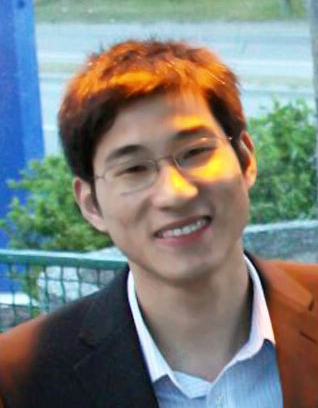Industrial Session
The industrial session for Practitioner Day is scheduled on 8-June, 1:40-3:20pm. The duration of each talk is 25min (including Q&A).
1.
Contextual Internet Multimedia Advertising
Presenter: Tao Mei (Microsoft Research Asia)
2.
Unsupervised Semantic Feature Discovery for Object-Based Image Applications
Presenter: Wen-Huang Cheng (Research Center for Information Technology Innovation (CITI))
3.
Learning the Social Pulses of a City from User-Generated Contents
Presenter: Zheng- Jun Zha (National University of Singapore)
4.
From Big Data to Deep Knowledge: Introducing Huawei Noah's Ark Research Lab in Hong Kong
Presenter: Qiang Yang (Head of Huawei's Noah's Ark Lab and Professor at Hong Kong University of Science and Technology)
1. Contextual Internet Multimedia Advertising
Presenter: Tao Mei (Microsoft Research Asia)
Abstract
Advertising provides financial support for a large portion of today’s Internet ecosystem. Compared to traditional means of advertising, such as a banner outside a store or textual advertisements in newspapers, multimedia advertising has some unique advantages: it is more attractive and more salient than plain text, it is able to instantly grab users’ attention and it carries more information that can also be comprehended more quickly than when reading a text advertisement. Rapid convergence of multimedia, Internet and mobile devices has opened new opportunities for manufacturers and advertisers to more effectively and efficiently reach potential customers. In this talk, we will summarize the trend of online multimedia advertising and propose an innovative advertising model driven by the compelling contents of media. We present a series of recently developed systems as exemplary advertising applications, in which the most contextually relevant ads are embedded at the most appropriate positions within the media. The ads selected by multimodal relevance yield contextual relevance to both the surrounding text and the visual content. The ad locations detected by visual saliency analysis minimize the intrusiveness to the user. We will show how the techniques from computer vision and multimedia can be leveraged for effective online advertising.
Short Bio of Presenter
Tao Mei is a Researcher in Microsoft Research Asia. His current research interests include multimedia information retrieval, computer vision, and multimedia applications such as search, advertising, social networking, and mobile applications. He is the editor of the first technical book on Internet multimedia advertising, the author of over 100 journal and conference papers in these areas, and holds more than 30 filed or pending US applications. He serves as an Associate Editor for Neurocomputing and Journal of Multimedia, a Guest Editor for IEEE Trans. Multimedia, IEEE Multimedia Magazine, ACM/Springer Multimedia Systems, and Journal of Visual Communication and Image Representation. He is the principle designer of the automatic video search system that achieved the best performance in the worldwide TRECVID evaluation in 2007. He received the Best Paper and Best Demonstration Awards in ACM Multimedia 2007, the Best Poster Paper Award in IEEE MMSP 2008, and the Best Paper Award in ACM Multimedia 2009. He was awarded Microsoft Gold Star in 2010. His work on online advertising received Microsoft Research Technology Transfer Awards in 2010 and 2012. He is a senior member of IEEE and a member of ACM. Dr. Mei received the B.E. degree in automation and the Ph.D. degree in pattern recognition and intelligent systems from the University of Science and Technology of China, Hefei, in 2001 and 2006, respectively.
2. Unsupervised Semantic Feature Discovery for Object-Based Image Applications
Presenter: Wen-Huang Cheng
Abstract
Most of us have been used to sharing personal photos on the social services (or media) such as Flickr and Facebook. More and more users are also willing to contribute related tags (e.g. geo-locations and taken-time) and comments, on the photos for photo management and social communication. Such user-contributed contextual information provides promising research opportunities for understanding the images in social media. To obtain desired images, users usually issue a query to a search engine using either an image or keywords. Therefore, the existing solutions for image retrieval rely on either the image contents (e.g., low-level features) or the surrounding texts (e.g., descriptions, tags) only. Those solutions usually suffer from low recall rates because small changes in lighting conditions, viewpoints, occlusions or (missing) noisy tags can degrade the performance significantly. In this talk, we tackle the problem by leveraging both the image contents and associated textual information in the social media and propose a general framework to augment each image with relevant semantic (visual and textual) features by exploiting textual and visual image graphs in an unsupervised manner. The proposed framework can be directly applied to various applications, such as keyword-based image search, image object retrieval, and tag refinement. Meanwhile, observing that visual objects in real-world images often exhibit great visual diversity (e.g. appearing in arbitrary size) accompanied with complex environmental conditions (e.g. foreground and background clutter), and such real-world characteristics are lacking in most of the existing image data sets, in this talk, we also propose a large-scale image data set of real-world objects (commercial advertising business signs) collected from Google’s Street View, containing more than 4,500 images of 62 different businesses with pixel-level object annotations, for promoting the related multimedia research.
Short Bio of Presenter

Wen-Huang Cheng is an Assistant Research Fellow at the Research Center for Information Technology Innovation (CITI), Academia Sinica, Taipei, Taiwan. He is the founding leader of Multimedia Computing Laboratory (MCLab) in CITI: http://mclab.citi.sinica.edu.tw/. His current research interest includes multimedia content analysis, computer vision, mobile multimedia applications, and human computer interaction. His research has received best paper awards from IEEE Consumer Electronics Society, Taipei Chapter, and IEEE Signal Processing Society, Taipei Chapter. He received the B.S. and M.S. degrees in computer science and information engineering from National Taiwan University, Taipei, Taiwan, in 2002 and 2004, respectively, where he received the Ph.D. degree from the Graduate Institute of Networking and Multimedia in 2008. From 2009 to 2010, he was a principal researcher at the MagicLabs, HTC Corporation, Taoyuan, Taiwan. He has been serving as the technical program committees of various conferences including ACM MM, CVPR, ECCV, and ICMR.
3. Learning the Social Pulses of a City from User-Generated Contents
Presenter: Zheng- Jun Zha (National University of Singapore)
Abstract
This talk introduces our research within NExT Search Center, which is a NUS-Tsinghua joint center on Extreme search.
Social network has become an indispensable part of social activities for many people. Most such people share their views, delights and life moments, as well as conduct online purchases on various types of social networks. In particular, a large amount of images and videos are shared in the process, which form a rich part of such social engagements and contents. The mining of such visual media, along with the associated text and metadata (collectively known as the user generated contents or GGCs), enables us to study the various aspects of social habits and preferences of users, and towards the generation of the graph of social pulses. This talk describes our research on analyzing the UGCs to generate the social graph of a city. It discusses our research on analyzing and structuring huge amounts of UGCs ranging from user comments, tweets, shared media, check-in venues, as well as well social activities on mobile devices. In particular, we will describe our research towards mining collective interests and concerns of people, social activities, various types of popular locations, trails and their photos, as well as local fashion trends.
Short Bio of Presenter

Zheng-Jun Zha is a Senior Research Fellow in School of Computing, National University of Singapore. His current research interests include multimedia information retrieval, computer vision, as well as multimedia applications such as search, recommendation, and social networking. He received the B.E. degree in automation and the Ph.D. degree in pattern recognition and intelligent systems from the University of Science and Technology of China, Hefei, in 2004 and 2009, respectively. He received the Microsoft Research Fellowship in 2007, the President Scholarship of Chinese Academy of Science in 2009, and the Best Paper Award in the ACM International Conference on Multimedia (ACM MM) in 2009. He is a member of IEEE and ACM.

Tat-Seng Chua is the KITHCT Chair Professor at the School of Computing, National University of Singapore (NUS). He was the Acting and Founding Dean of the School of Computing during 1998-2000. He joined NUS in 1983, and spent three years as a research staff member at the Institute of Systems Science (now I2R) in the late 1980s. Dr Chua's main research interests are in multimedia information retrieval, multimedia question-answering, and the analysis and structuring of user-generated contents. He works on several multi-million-dollar projects: interactive media search, local contextual search, and real-time live media search.
Dr Chua has organized and served as program committee member of numerous international conferences in the areas of computer graphics, multimedia and text processing. He is the conference co-chair of ACM Multimedia 2005, CIVR (Conference on Image and Video Retrieval) 2005, and ACM SIGIR 2008, and the Technical PC Co-Chair of SIGIR 2010. He serves in the editorial boards of: ACM Transactions of Information Systems (ACM), Foundation and Trends in Information Retrieval (NOW), The Visual Computer (Springer Verlag), and Multimedia Tools and Applications (Kluwer). He sits in the steering committee of ICMR (International Conference on Multimedia Retrieval), Computer Graphics International, and Multimedia Modeling conference series; and serves as member of International Review Panels of two large-scale research projects in Europe. He is the independent director of 2 listed companies in Singapore.
4. From Big Data to Deep Knowledge: Introducing Huawei Noah's Ark Research Lab in Hong Kong
Presenter: Qiang Yang (Head of Huawei's Noah's Ark Lab and Professor at Hong Kong University of Science and Technology)
Abstract
In 2012, the water flood may not come after all, but the data flood is surely coming. Huawei's Noah's Ark Research Lab will establish itself as a center for the scientific and engineering advancement on Artificial Intelligence and big data mining, to meet the big-data challenge. Being the first industrial research lab of its kind in Hong Kong, the lab focuses on natural language processing and information retrieval, data mining and machine learning, social media and mobile intelligence as well as human-computer interaction. This talk will give an introduction to the lab's goals and objectives.
Short Bio of Presenter

Qiang Yang is a professor in the Department of Computer Science and Engineering, Hong Kong University of Science and Technology. He is an IEEE Fellow. His research interests are data mining and artificial intelligence. Qiang received his PhD from the University of Maryland, College Park in 1989. His research teams won the 2004 and 2005 ACM KDDCUP competitions on data mining. He is a vice chair of ACM SIGART, a founding Editor in Chief of the ACM Transactions on Intelligent Systems and Technology (ACM TIST), a PC Co-chair for ACM KDD 2010 and the General Chair for ACM KDD 2012 in Beijing.
ACM International Conference on Multimedia Retrieval, Jun. 5 - 8, 2012



